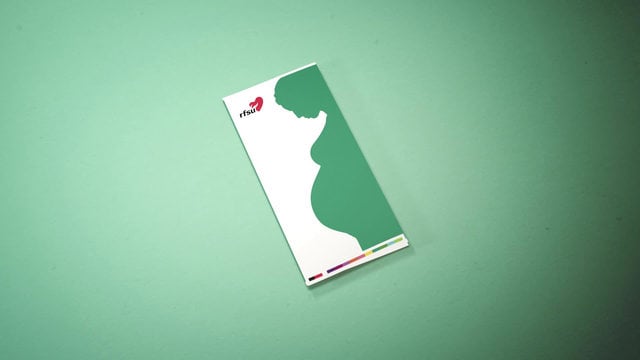
Giving birth
View as text
Information from RFSU about childbirth
When you are pregnant and the delivery is getting close, there can be many questions and feelings that arise. You can attend courses that will prepare you for both childbirth and parenting. Your midwife is responsible for providing you with the information and support you need.
In Sweden, most births take place in hospitals where there are healthcare professionals available. Most people will also have someone with them for support during the birth. Find out in advance how many people can be there and think about who you want to have with you. You may feel more secure if you plan in advance how you will get to the hospital and with whom.
You will also have the right to an interpreter during the delivery. If you have been subject to genital mutilation or circumcision, as it is also called, and sewn together, it is important to inform your midwife so that reopening surgery can be done before the delivery. Staff are then prepared and can provide you with what you need to feel comfortable and safe. The genitals will not be re-sewn together afterwards. That is illegal in Sweden.
Childbirth will usually begin with cramps. When they start, you will need to call the maternity ward for advice on when you should go to the hospital. If the delivery starts with bleeding or the fetal waters break, you should always call the maternity ward or go there. You will usually stay at home for the first few hours before going to the maternity ward. It is important to rest, drink, and eat so that you have strength for when it is time to go to the hospital.
It can take several hours from the first cramps to when they become regular and stronger. There will be pauses between each cramp. Childbirth can happen very quickly, but it can also take many hours. Your first childbirth may take longer. You will be supported by a midwife and another health care professional, who will also help you if you need pain relief during the birth.
In some cases, when the baby or the mother are not well or are distressed, a cesarean section may be needed. A cesarean section is an operation in which the doctor makes an incision in your stomach and uterus and lifts the baby out. It may be planned or an emergency procedure.
At the final stage of the delivery, the baby will begin to press downwards, which can result in a feeling of both wanting to push or squeeze and hold. It is not unusual to feel tired during the delivery. It is important that you are supported by both those you have with you and by the midwife. The midwife will help you push in the correct way and find the right position.
Once the baby has been delivered, it will be dried and placed skin to skin so the baby feels warm and secure. After a moment, it will be time to cut the umbilical cord and the placenta must be passed. Your vagina will be examined to check whether you have ruptured. Some types of rupture require stitching, while other ruptures will heal themselves.
If you have any questions about childbirth, talk to your midwife at the maternity ward. Everyone who is delivering a baby has the right to a safe and secure childbirth.
About the video
The video about giving birth is about how the process of having a baby works in Sweden, from the beginning of labour pains until the baby is born. You will learn how to prepare and what help you can get before the delivery if you are circumcised/have been subjected to genital mutilation. You will also get information on how a caesarean section is done.
Questions to think about after the video
- What do you think is especially important to know about giving birth?
- Some people feel worried and stressed about giving birth. Why might that be? How can someone reduce their fear and stress about giving birth?
- What can a person do to feel as secure as possible while giving birth? What can the midwife do? What can a partner do?
Do you want to talk about the video?
Talking with someone about the video can feel important and give new insights. You might have questions and thoughts that are good to discuss with others rather than just thinking about them on your own. By sharing and listening to each other, we can get support and learn together.
Would you like to start a group and talk about the videos? Here are some tips about what you can do.
